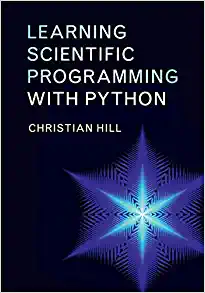Question
EXPERIMENT 1: ELECTROSTATICS Objective: To understand and explore concepts of static electricity such as charge transfer, attraction, repulsion, and induced charge. Equipment Needed: Scotch tape
EXPERIMENT 1: ELECTROSTATICS
Objective:
To understand and explore concepts of static electricity such as charge transfer, attraction, repulsion, and induced charge.
Equipment Needed:
Scotch tape and common household materials, such as paper towels, plastic cups, soda cans, etc.
Theory:
Electric charge is an inherent property of all matter, which means that we can study how objects in the universe respond to each other by exploring the quantity and quality of the charge they contain. Experiments have shown that only two types of charge exist, and we (arbitrarily) call them positive and negative. A proton is an example of an object that has positive charge while an electron is an example of an object that has negative charge. We now know that these two types charges exist in the atoms of all matter in the form of positively charged protons in the nuclei of atoms and negatively charged electrons which orbit the nucleus. Most objects contain equal numbers of electrons and protons, and we say these objects are electrically neutral. An object that has an excess of one type of charge is said to be charged. Negatively chargedobjects contain an excess of electrons while positively charged objects contain a deficit of electrons.
Observations and experiments have shown that the basic properties of charged objects include:
- Frictional forces, such as rubbing two objects together, add or remove charge from an object. Typically, only negative charges (electrons) are transferred by rubbing objects.
- Charged objects exert forces on each other, even when they are not in contact. Two objects having charge of the same type repel each other (like charges repel) and two objects having charge of the opposite type attract each other (unlike charges attract).
- The force of attraction depends on the charge on each object and the distance between the two objects.
- Charged objects of either type attract neutral objects, even when they are not in contact. This is because a charged object brought near a neutral object repels the same type of charge and attracts the opposite type of in the neutral object. This causes or induces a charge separation in the neutral object.
- The ability of charges to move around in an object depends on the type of material the object is made from. In some materials called conductors, electrons can freely move around from one part of the material to another. In other materials called insulators, the electrons are all tightly bound to their atoms or molecules and cannot flow through the material.
In this experiment, we will study some of these basic properties of charge by exploring the interaction between electrically charged stationary objects.
Activity 1
To answer the questions in this activity, you will have to use the PhET simulation Balloons and Static Electricitydeveloped at the University of Colorado at Boulder. The URL for the simulation is https://phet.colorado.edu/en/simulation/balloons-and-static-electricity You can either run it online or download the simulation onto your computer. When you click the simulation link, a new window will load. Make sure that "Show all Charges" is selected, only one balloon shows in the window, and the wall is present.
I. Uncharged Balloon
A: (3 points) Place the balloon very near (but not touching) the wall.
Step by Step Solution
There are 3 Steps involved in it
Step: 1

Get Instant Access to Expert-Tailored Solutions
See step-by-step solutions with expert insights and AI powered tools for academic success
Step: 2

Step: 3

Ace Your Homework with AI
Get the answers you need in no time with our AI-driven, step-by-step assistance
Get Started








